Treatments
Scaling and polishing are essential dental services that play a crucial role in maintaining oral health. Scaling involves the removal of plaque and tartar deposits from the teeth and gumline, preventing the progression of gum disease.
Regular scaling and polishing sessions are integral to oral hygiene routines, preventing issues like cavities, gum inflammation, and bad breath. These services contribute to a brighter smile and support overall oral well-being, underscoring the importance of routine dental care in maintaining a healthy mouth.
Regular check-ups with a dentist can ensure that scaling and polishing are performed at appropriate intervals, promoting long-term dental health.
Scaling & Polishing
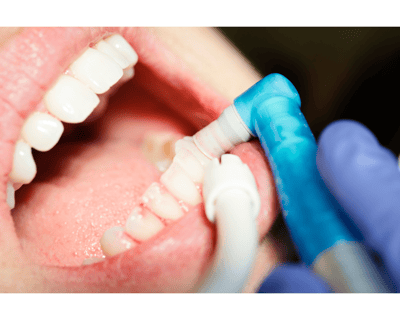

Fluoride varnish is a dental treatment that involves applying a concentrated fluoride solution to the surfaces of teeth to help prevent tooth decay. It is commonly used in dental offices and clinics as a preventive measure, especially for individuals who are at a higher risk of developing cavities.
Fluoride also allows teeth damaged by acid to repair, or remineralize themselves. Fluoride cannot repair cavities, but it can reverse low level tooth decays and thus prevent new cavities from forming.
Fluoride varnish
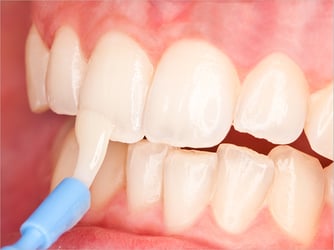

Dental fillings play a crucial role in maintaining oral health by addressing cavities, a common dental issue caused by tooth decay.
When decay penetrates the enamel, creating holes or cavities, dental fillings are employed to restore the affected tooth. During a dental filling, the dentist removes the decayed portion of the tooth and fills the resulting void with a durable material such as composite resin.
Besides preserving the tooth's structural integrity, modern dental fillings are designed to blend seamlessly with natural teeth, ensuring a cosmetically pleasing result. Regular dental check-ups enable early detection of cavities, allowing for timely intervention through dental filling services, thus promoting overall oral well-being.
Dental Filling
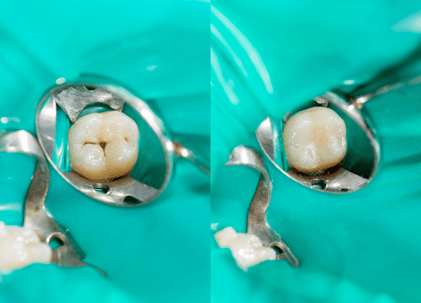

Dentures are removable dental appliances replacing missing teeth and the surrounding tissues to restore your smile, gives you a younger and more attractive appearance!
There are a few types of dentures currently :
Acrylic dentures
-Renowned for their durability and affordability, provides a comfortable fit and natural appearance.Flexible dentures
-denture is more flexible and thinner in nature, ensuring increased comfort during everyday activities.Cobalt Chrome dentures
-Made from a combination of a cobalt chrome plate and acrylic or flexible material finishing, this type of denture provides exceptional strength and comfort
Dentures
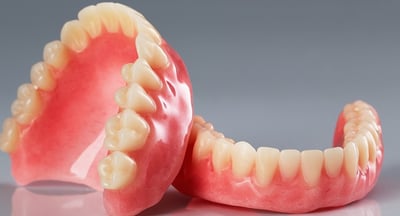

A dental crown serves as a protective covering for a tooth that has undergone significant damage, decay, or structural weakness. It encapsulates the entire visible portion of the tooth, restoring its original shape, size, and strength.
Dental crowns are employed in various situations, such as:
Large Fillings: When a tooth has a substantial filling, a crown provides added support.
Fractured or Broken Teeth: Crowns help bind and protect fractured or broken teeth.
Root Canal Treatment: Following a root canal, a crown is often placed to strengthen the treated tooth.
Cosmetic Enhancement: Crowns can improve the appearance of misshapen or discolored teeth.
Dental crowns can be crafted from different materials, each with its own advantages:
Porcelain: Provides a natural appearance and is suitable for front teeth.
Metal: Offers durability and is often used for molars.
Porcelain-fused-to-metal (PFM): Combines the aesthetics of porcelain with the strength of metal.
All-Ceramic or All-Porcelain: Ideal for achieving a natural look, especially in visible areas.
Dental Crown
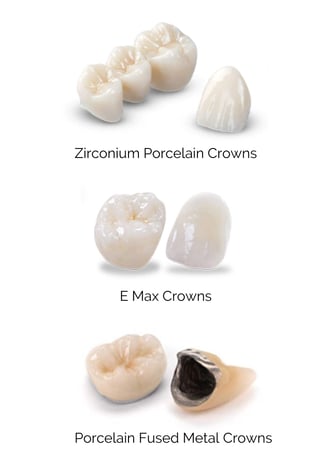

A dental bridge is a fixed dental restoration used to replace one or more missing teeth by bridging the gap between adjacent teeth.
Types of bridge :
Traditional Bridge: Consists of a pontic (artificial tooth) held in place by dental crowns on adjacent natural teeth.
Cantilever Bridge: Used when there are adjacent teeth on only one side of the gap.
Maryland Bridge (Resin-Bonded Bridge): Involves wings attached to the back of adjacent teeth, eliminating the need for crowns.
Dental bridges can be made from various materials, including:
Porcelain: Provides a natural appearance.
Porcelain-Fused-to-Metal (PFM): Combines the strength of metal with the aesthetics of porcelain.
All-Ceramic: Ideal for achieving a natural look, especially in visible areas.
Dental Bridge
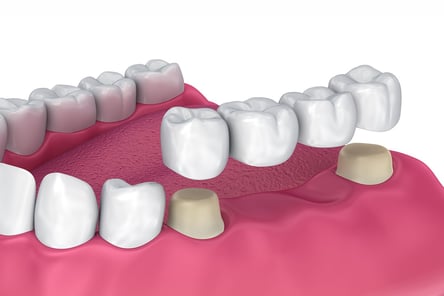

A root canal treatment is a dental procedure to remove inflamed or infected pulp on the inside of the tooth which is then carefully cleaned and disinfected, then filled and sealed. Root canal treatment is designed to eliminate bacteria from the infected root canal, prevent reinfection of the tooth and save the natural tooth.
After removing the infected pulp and cleaning the internal structure of the tooth, it is then filled and sealed to prevent further infection.
A crown restoration is advisable to protect the endodontically treated tooth in a long term wise. Thus, an endodontic treatment requires a few visits that depend on the severity of the pulp infection and follow-up procedures.
Root Canal Treatment
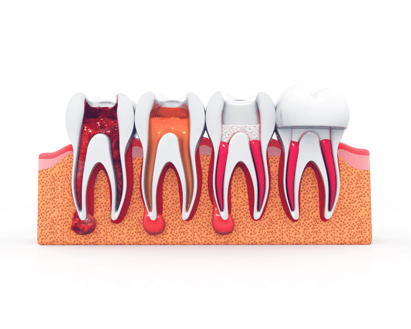

ICON infiltration therapy treats intrinsic (internal) stains in a gentle and aesthetic manner as well as early incepient caries. Intrinsic stains are brown or white tooth discolourations on teeth. They can be spots or bands on the smooth surface of the tooth.
In the past, these spots or bands are removed by removing precious tooth structure and replacing that portion with a tooth-coloured restoration.
Now, the infiltration technique allows unsightly stains to be successfully removed with teeth whitening and gentle infiltration therapy.
It is painless since no drilling is required.
ICON Infiltration
A dental implant is a replacement for a missing tooth or teeth. The dental implant sits in bone to give you a fixed solution that mimics a natural tooth.
Dental implants are made of titanium and placed in bone to replace the root of a missing tooth.
Dental Implants
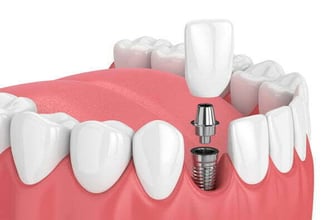

Wisdom tooth surgery, also known as wisdom tooth extraction, is a common dental procedure performed to remove one or more wisdom teeth. Wisdom teeth are the third set of molars located at the back of the mouth, and their extraction is often necessary due to issues such as impaction, crowding, or potential damage to adjacent teeth. Here are key points about wisdom tooth surgery:
It's important to note that not everyone requires wisdom tooth surgery, and each case is unique. Dentists will assess the individual's oral health, the position of the wisdom teeth, and any potential issues before recommending extraction
Minor Oral Surgery
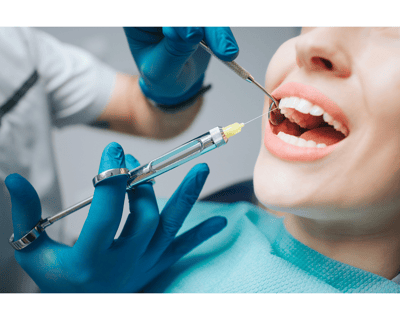

Braces
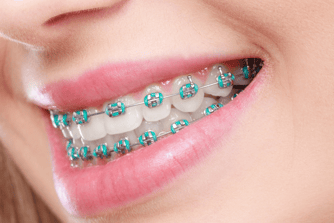

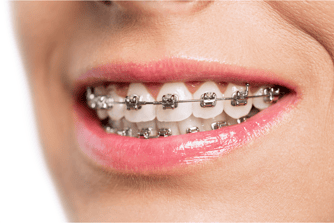

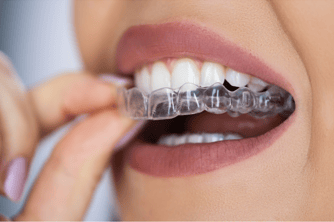

Removable plastic trays that corrects teeth alignment. Highly esthetic.
Metal brackets with its own slot to hold wires in place. More comfortable and less discomfort throughout the treatment.
Braces with metal brackets paired with
colored elastics are placed to hold the arch wire in place. Elastics colour can be changed each visit for a more unique and colorful smile.
Conventional braces
Clear Aligners
Self-Ligating Braces/Damon Braces
Retainers are worn after braces to maintain the teeth position and prevents it from moving back to its original position until the periodontal ligaments gets adjusted to its new position
There are several types of retainers available, all of which are custom-made just for you!
These include:
Hawley Retainers
A thin, tongue-shaped piece of acrylic molded to fit your mouth, with a wire to hold your teeth in place. This design is simple, durable, and easily removed.
Essix Retainers
These retainers are custom-made of thin, transparent plastic which is designed to to be a precise fit to your teeth. Encourage the discrete nature of this retainer with no wire and invisibility.
Fixed Retainers
Fixed retainers are an excellent option for some patients, especially on the lower front teeth. The aren’t removable, but they aren’t visible to you either. This retainer uses a wire to bond the tongue side of the teeth.
Retainers
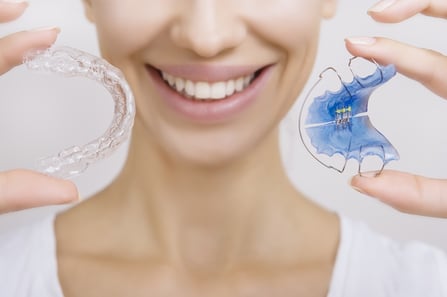

Teeth whitening is a cosmetic dental procedure designed to lighten the color of teeth and remove stains or discoloration. It's a popular and non-invasive way to enhance the appearance of teeth, giving them a brighter and more youthful look. Here's an overview of the key aspects of teeth whitening:
In-Office Whitening
This is a professional and supervised teeth whitening procedure performed at the dental clinic. It often involves the application of a high-concentration whitening gel, activated by a special light or laser. In-office whitening provides quick and noticeable results in a single session.
Home Whitening
Custom-fitted trays and a lower-concentration whitening gel for patients to use at home. This method takes longer to achieve results but allows for more gradual and controlled whitening.
Teeth Whitening




